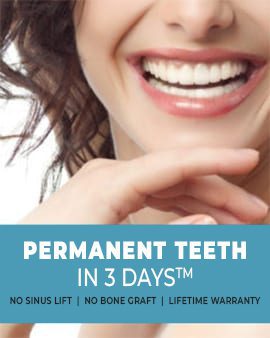Jan 07, 2023
Almost everyone wants a whiter, brighter smile these days. For people who have deep stains, this can be hard to do. Deep, dark stains on the teeth can be fixed in a few different ways. They have different degrees of success and have pros and cons of their own.
What makes teeth have deep stains?
There are different kinds of tooth stains, and the kind of stain does make a difference in which treatments will work. Extrinsic staining happens when stains build up on the outside of the teeth. Intrinsic staining is when stains are built into the structure of the tooth as it grows.
Dentists aren’t sure if extrinsic stains can get into the enamel and turn into intrinsic stains over time, and they aren’t all in agreement on this yet. The truth is that we don’t need to know the answer to that question before treating the teeth in the ways described below.
External Stains
Almost everyone will get stains on their teeth from outside sources over time. This happens because of the dark colors in food, drinks, and tobacco. The more often you use something dark and the more often you use it, the more stains you will get. Most stains on the outside of the tooth can be removed by polishing the top layer of enamel. This happens when you use whitening toothpaste with small abrasive particles and when you get your teeth cleaned by a professional.
Polishing away external stains is a great way to keep your teeth white after whitening them, especially if you plan to keep drinking 4 cups of coffee a day.
Internal Staining
Because intrinsic stains are deeper than the enamel’s top layer, they won’t come off with whitening toothpastes or professional teeth cleanings. It will, however, work with teeth-whitening products that contain hydrogen peroxide or a close relative of it. Peroxide compounds do work on intrinsic staining because they get into the enamel and break up dark molecules inside the tooth.
The hardest stains to get rid of are the ones that happen when teeth are still growing, like those caused by the drug Tetracycline and a condition called fluorosis.
There are several ways to improve your smile by whitening your teeth or covering up deep stains that you don’t like.
Over-The-Counter Whitening Products
Many people start by using over-the-counter products to whiten their teeth. In many situations, these items can make a big difference. In general, the cost is very low, the way to use it is annoying, and the results are not that great.
Because they are cheap, they can be a good way for you and your dentist to figure out which teeth-whitening method will help you reach your goals. For example, if you used Crest Whitestrips for 10 days and saw a small but noticeable change, this tells your dentist that your teeth do react to the peroxide in teeth whitening gels. Then we can expect a better result when a dental professional uses a gel with more power.
Pros:
- Inexpensive
- Some results expected
Cons:
- Because the way it was put on wasn’t the best, it was hard to keep on the teeth.
- Minimal results.
- Time consuming.
- There is no promise of results.
- Whitening needs to be kept up.
Teeth Whitening by a Professional
When we talk about professional teeth whitening, we mean any kind that requires a trip to the dentist. At Dr. Motiwala’s Dental Clinic & Implant Center, this includes both in-office whitening and professional take-home whitening. Both use professional gels that are strong and are put on the teeth in a precise way.
Professional teeth whitening is better than over-the-counter products for getting rid of deep stains. But you can expect it to take longer to get rid of deep stains than it does to make your teeth look brighter in general. Some case studies show that deep tetracycline stains can be removed by using whitening gel in custom-made trays every day for six months.
Pros:
- Deep stains are cleaned better than with over-the-counter products.
- Faster results Easier method of application with custom-fitted trays.
Cons:
- More expensive than products you can buy over the counter.
- Time consuming.
- Whitening needs to be kept up.
Porcelain Veneers
Porcelain veneers do not count as a way to whiten your teeth. But they are good for getting rid of deep stains on teeth. Most of the time, porcelain veneers are not the first treatment people think of when their teeth are stained. But if whitening hasn’t worked for a patient, porcelain veneers may be the last treatment they need to get the smile they want.
A veneer effectively whitens teeth by replacing the outer layer of enamel with porcelain, which can be any color the patient wants. (We haven’t seen anyone choose a color other than white yet.) Porcelain veneers cover any flaws or stains that are visible on the front surfaces of teeth. This is what we often call “permanent teeth whitening.” Porcelain is highly glazed glass that doesn’t stain and keeps looking good for a long time.
With veneers, you can change more than just the color of your teeth. You can also change the shape, size, and alignment of your teeth.
Pros:
- Sure to cover up any kind of stain.
- There’s no need to keep the whiteness up.
- Can fix more than just stains, like teeth that aren’t the right shape, are chipped, or aren’t in the right place.
Cons:
- It can cost up to $1500 per tooth.
- May need a nightguard to protect them while they sleep.
- Requires dental treatment.
So, How Do You Get Rid of Deep Stains?
Call Dr. Motiwala’s Dental Clinic and Implant Center right away to set up a meeting with Dr. Motiwala. They can answer any questions you have about the stains on your teeth and what options will help you get the smile you want the most.
Dr. Motiwala in International Press
Dr. Motiwala is a world-renowned dentist who has cared for thousands of patients from every corner of the globe. He has been featured on several news outlets; to read about it, select the network’s logo below.
 |
 |
 |
Time to Get in Touch With Us!!
For more information about the Smile Makeover in India, get in touch with Dr. Motiwala’s Dental Clinic & Implant Center at +91 99596 14584. Simply fill out the form on our CONTACT US page.






